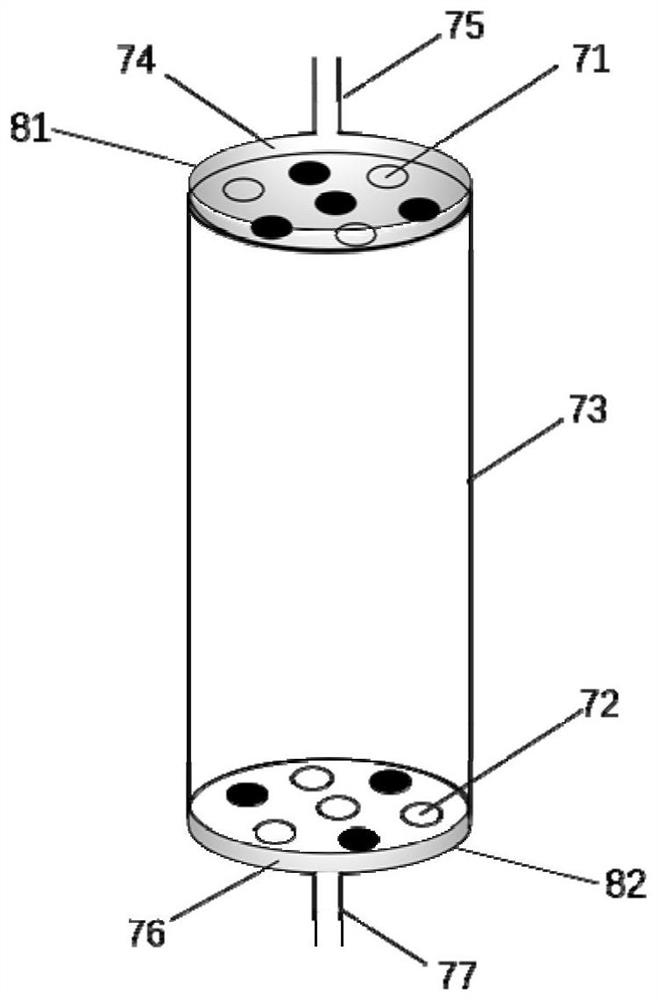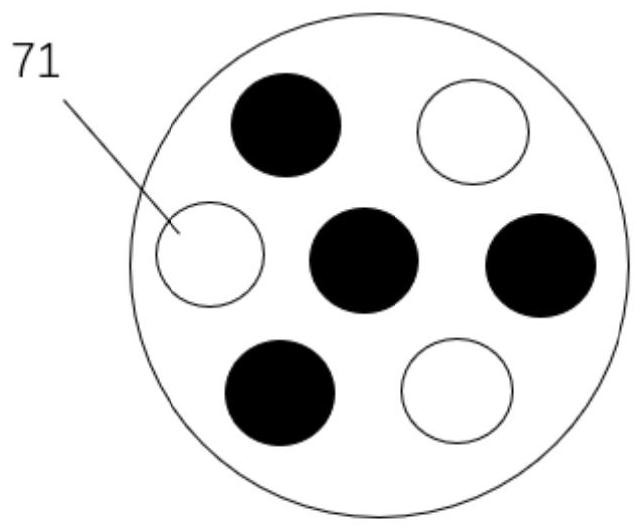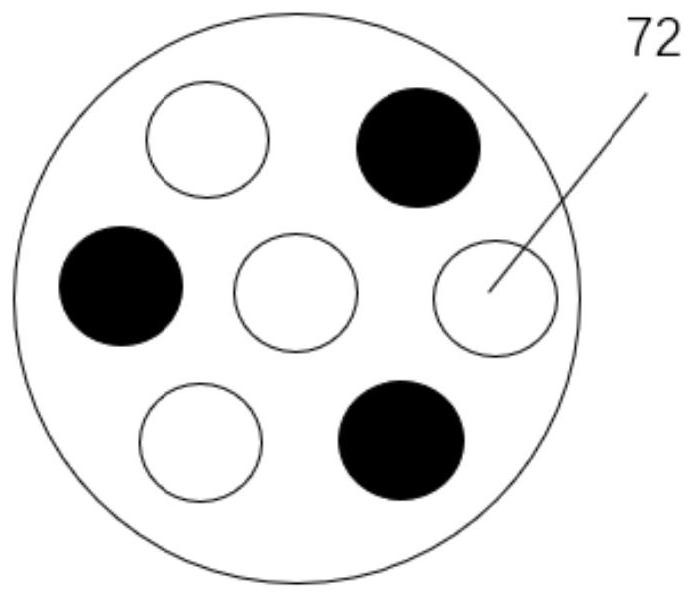Electrocatalysis-ozone-membrane filtration three-in-one wastewater treatment device
A three-in-one, membrane filtration technology, applied in the direction of oxidized water/sewage treatment, special compound water treatment, water/sewage treatment, etc., can solve the problems of low utilization rate of oxygen and ozone, achieve good water effluent effect, efficient degradation, simple structure Effect
- Summary
- Abstract
- Description
- Claims
- Application Information
AI Technical Summary
Problems solved by technology
Method used
Image
Examples
Embodiment 1
[0061] An electrocatalysis-ozone-membrane filtration trinity wastewater treatment device includes a reaction tank 1, a water inlet system, a power supply 5, an anode 6, a cathode membrane assembly, an ozone generation system, a water outlet system and a catch tank 32.
[0062] The cathode membrane assembly includes a microporous multi-channel tubular conductive ceramic membrane 7, a first cover 81 and a second cover 82, and the upper and lower ends of the microporous multi-channel tubular conductive ceramic membrane 7 are connected to the first cover 81 respectively. , the upper cavity 74 and the lower cavity 76 formed by the second cover 82, the first cover 81 is provided with a water outlet 25; the second cover 82 is provided with an air inlet 77; the micropore The multi-channel tubular conductive ceramic membrane 7 has a pore size of 20 μm, and the number of channels is 7, of which there are 4 channels sealed at the upper end and 3 channels sealed at the lower end, and the c...
Embodiment 2
[0073] The difference from Example 1 is that the microporous multi-channel tubular conductive ceramic membrane 7 is prepared by the following method.
[0074] Soak the multi-channel tubular ceramic membrane 7 with a pore size of 20 μm (the base material is SiC) in saturated NaOH-ethanol solution and ultrapure water for cleaning, take it out and wash it, place it in a glucose solution for suspension and stirring for 24 hours, and then place it in the Vacuum drying was carried out at 160° C., and carbonization was carried out at 650° C. for 2 hours under the protection of a nitrogen atmosphere, so as to prepare a carbon-deposited multi-channel tubular conductive ceramic film 7 .
[0075] The specific mode of operation of the device of the present invention is
[0076] Concrete mode of operation 1-use the device of embodiment 2 of the present invention
[0077] S1: The organic wastewater enters the reaction pool 1 through the water inlet system, and the power supply 5 is powered...
PUM
| Property | Measurement | Unit |
|---|---|---|
| pore size | aaaaa | aaaaa |
| pore size | aaaaa | aaaaa |
Abstract
Description
Claims
Application Information
 Login to View More
Login to View More - R&D
- Intellectual Property
- Life Sciences
- Materials
- Tech Scout
- Unparalleled Data Quality
- Higher Quality Content
- 60% Fewer Hallucinations
Browse by: Latest US Patents, China's latest patents, Technical Efficacy Thesaurus, Application Domain, Technology Topic, Popular Technical Reports.
© 2025 PatSnap. All rights reserved.Legal|Privacy policy|Modern Slavery Act Transparency Statement|Sitemap|About US| Contact US: help@patsnap.com



